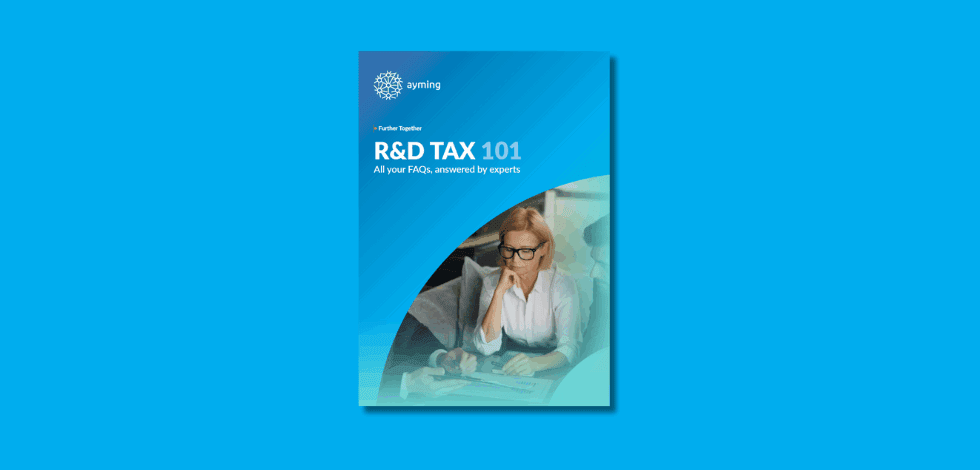Any business is at risk of being investigated by HM Revenue and Customs (HMRC) at any time.
For many organisations, being subjected to a tax investigation can be an extremely daunting and stressful experience, particularly if they’ve had limited prior engagement or interaction with HMRC.
In my last article, I discussed the process HMRC tend to adopt during their tax investigations so companies know exactly what to expect if they are ever investigated. Processes-aside, there are also certain techniques that HMRC tend to deploy when conducting their investigations, this article focuses on four of them.
Technique #1: Allowable versus disallowable expenses
It may sound like an obvious point, but it’s essential that companies know which expenses are valid in the eyes of HMRC.
When exploring allowable versus disallowable expenses, HMRC will be looking to clarify if the set of business expenses they have in front of them are ‘allowable’ by checking if they:
- Have been backed up with valid invoices; and
- Relate to the business in question’s primary trade.
HMRC can also look into the validity of VAT numbers, for instance, if an expense has been put through and VAT has been reclaimed on that particular expense. And they can also check if the 9-digit registration number matches their records too. (Top tip – get into the habit of checking the VAT numbers yourself when bookkeeping or implement an internal control for this. You may want to use this website, www.vatcheck.eu, to help you with your checks. It allows you to check the validity of a VAT number prior to applying the 0% rate when selling goods or services to EU countries).
If HMRC can prove that an expense is invalid, then the company’s profit will increase as a result of their expenses having been disallowed. One area that always tends to catch businesses out is client entertaining – so many organisations submit it as an expense however, it is disallowed by HMRC.
Technique #2: Revenue versus capital
In order for us to establish a clearer understanding of what HMRC look for here, we need to take a step back and quickly run through the accounting and tax treatment of revenue and capital expenditure.
Revenue expenditure:
Revenue expenditure, for example, software licenses, are allowed in the year it is incurred, and so is deducted from taxable profit right away.
Capital expenditure:
On the other hand, capital expenditure, for example, on a computer, has a useful economic life over a period of more than two years, and so therefore cannot be 100% deducted from taxable profits in the year it is incurred.
Instead, it ought to be capitalised and capital allowances (which have their own set of rules that must be followed) should be claimed instead.
So, in relation to HMRC’s approach, they would investigate which revenue costs, of which a company has deducted from its taxable profits, are in fact, capital in nature. This disallows the cost from taxable profits as it would undergo a different accounting and tax treatment, and consequently may then increase the business’ taxable profits.
If you’re a tech start-up then you might find this article, ‘Revenue or capital? Initial tech start-up costs for R&D tax explained,’ useful as it focuses on revenue versus capital expenditure in greater detail.
Technique #3: The cash flow test
Now this is where things get really exciting – HMRC’s cash flow test, which follows this very simple formula:
Earnings = savings + spending, which combined with bank statements could look something like this…
| Day | Cash at start | Plus sales | Less expenses | Less bankings | Cash C/F |
| Monday | £10 | £50 | £10 | £30 | £20 |
| Tuesday | £20 | £30 | £20 | £20 | £10 |
| Wednesday | £10 | £30 | £25 | £25 | -£10 |
The table above provides a very simple, yet real, example of how HMRC’s cash flow test works. As you may have already guessed, a negative cash flow on Wednesday is not possible and in these instances, HMRC may assume that sales on that day were understated.
Let’s delve a bit deeper into this analysis, when conducting this test, is it common for HMRC to make assumptions and, if so, what would their assumptions look like in relation to the figures above? Well, their assumptions could look a lot like this:
- Cash at start – How was the opening balance of £10 determined? Did it take into account any capital introduced from a previous period?
- Sales – How were these figures determined? Income could be generated through cash or on credit – have these been separated correctly? Or are they from till receipts and how accurate are the receipts? Are some employees careless with their till inputs?
- Expenses – Were all of these expenses paid straight away? Or were they recognised as an expense? Will the bills be settled at the end of the month? Have any assumptions been made in relation to when employees are paid? Are they paid monthly/weekly and has this cost been represented accurately in the cash flow test?
- Bankings – When are the funds taken to the bank? And when do they appear on the bank statements?
I’m sure you are now starting to see why I said this is where things can get really interesting!…
Technique #4: Business economics
This is another exciting test that’s full of assumptions and counter-assumptions.
HMRC may choose to investigate a business’ economics, which could start by simply questioning its gross profit margin and profitability in comparison to other similar businesses operating within the same area or trade.
Although the assumptions and tests would vary depending on the type of business involved, HMRC would look to investigate how much their product costs, determining the cost of sale and how much the product is sold for.
In practical terms, it could look like this:
Business 1 – factory
HMRC focus: What is the weight and therefore cost of the raw materials and finished goods? How often are the deliveries? What is the average selling price?
Based on these details, HMRC will then estimate the sales, cost of sale and gross profit figures.
Business 2 – takeaway restaurant
HMRC focus: What is the average meal sold for and the total number of meals sold?
These figures will all provide HMRC with the company’s sales figure.
HMRC’s tax investigators can also make further assumptions about a business’ economics and how it operates based on the wider information that’s available to them, such as supplier and customer invoices, as well as their general perception of the industry and area.
There are many variations and methods HMRC can adopt however, all methods have the same underlying purpose. If examination of private affairs – spending, saving, does not tie in with the business they’re investigating, then they will consider records to have been broken on the basis that earnings = savings + spending.
There are some instances when HMRC can choose to pay a visit to the business that’s under investigation. Companies are usually notified when HMRC are due to visit and a time is agreed in advance.
However, there are some occasions when unannounced visits do take place, which usually indicates that HMRC suspects fraudulent activity is happening. If the company or its accountant have been cooperative with HMRC, then they are not obliged to grant access or answer any questions. They can also request for the visit to take place at a more suitable time. It’s also worth noting here that HMRC does not have the right to obtain computer records without the company’s prior consent or permission from a tribunal.
According to HMRC’s Compliance Handbook, paragraph 254010:
‘…an unannounced visit must only be made where there is a clear operational need to avoid giving advance notice of an intended visit, and the intrusion and potential inconvenience is justified to achieve HMRC’s aims, see CH21360.
‘If the tax position can be established in a less intrusive manner an unannounced visit is not appropriate. Further guidance on the Human Rights Act can be found at CH21300.’
Tax investigations can vary greatly, depending on the investigator and the chosen methodology for investigation. However, it is always important to know your rights and better understand what you can expect from HMRC and vice versa.
We hope this article has helped demystify HMRC’s tax investigations, as well as provide you with the practical insight you need to gauge what may be required if your business is ever subject to a tax investigation. If you would like to find out more or need any further advice, please contact us on 020 30 58 58 00 or email contactuk@ayming.co.uk.













No Comments